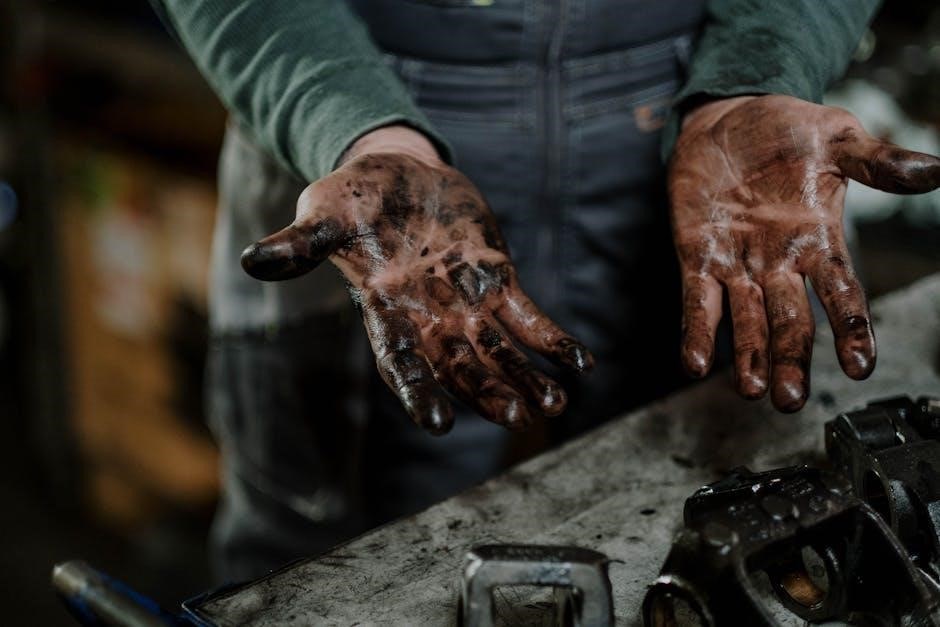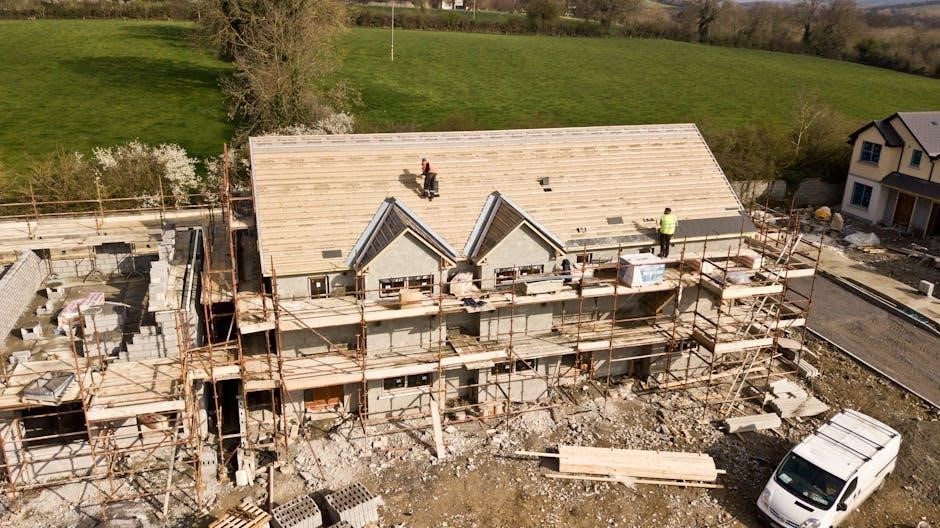Scaffolding parts include various components like frames, tubes, and couplers, used to construct a temporary structure, with a
definition
that is crucial for understanding its purpose and applications in construction sites every day normally.

Definition of Scaffolding

Scaffolding is a temporary structure used to support construction workers and materials during building, repair, or maintenance work. The purpose of scaffolding is to provide a safe and stable platform for workers to perform their tasks at heights. It is typically made of wooden or metal frames, with horizontal and vertical members, and is designed to be easily assembled and disassembled. Scaffolding can be used for a variety of tasks, including painting, plastering, and bricklaying, and is an essential component of many construction projects. A clear understanding of scaffolding is necessary to ensure safe and efficient construction work. The definition of scaffolding is closely tied to its function, which is to provide a temporary and flexible means of accessing high areas. By using scaffolding, workers can complete tasks quickly and safely, without the need for ladders or other cumbersome equipment. Overall, scaffolding plays a critical role in the construction industry, and its definition is an important part of understanding its uses and applications; Scaffolding is used worldwide and is a crucial part of many construction projects, including buildings, bridges, and other infrastructure.
Types of Scaffolding
There are several types of scaffolding, each with its own unique characteristics and uses. Single frames and double frames are two common types, with single frames using the building as an additional support and double frames being separate from the building. Tube and coupler scaffolding, prefabricated modular system scaffolds, and H-frame scaffolds are also widely used. Suspended scaffolds, timber scaffolds, and bamboo scaffolds are other types, with bamboo scaffolds being particularly common in China and India. Each type of scaffolding has its own advantages and disadvantages, and the choice of which to use depends on the specific needs of the project. The different types of scaffolding are designed to provide safe and efficient access to high areas, and are an essential part of many construction projects. The variety of scaffolding types allows for flexibility and adaptability in different construction situations. Scaffolding types can be categorized based on their materials, structures, and applications, and understanding the different types is important for selecting the right scaffolding for a particular project. The selection of scaffolding type depends on factors such as building design, construction requirements, and safety considerations.

Main Components of Scaffolding
Main components include frames, tubes, and
couplers
that connect them, forming a temporary structure for construction purposes normally used every day.
Scaffold Tubes
Scaffold tubes are a crucial component of scaffolding systems, providing the framework for the structure. They are typically made from galvanized steel, which offers durability and resistance to corrosion. The tubes come in various lengths, ranging from 5ft to 21ft, and are used for different purposes. For example, the 21ft tubes are often used as upright standards, connecting the scaffolding to the ground and providing stability. The tubes are designed to be heavy-duty, withstanding the weight of workers, materials, and equipment. They are also versatile, allowing for easy assembly and disassembly of the scaffolding. Scaffold tubes play a vital role in ensuring the safety and efficiency of construction projects, and their quality is essential for maintaining the structural integrity of the scaffolding. The tubes are manufactured according to strict standards, ensuring they meet the required specifications and regulations. Overall, scaffold tubes are a fundamental element of scaffolding, enabling the creation of a safe and reliable working platform for construction workers. The use of high-quality scaffold tubes is essential for preventing accidents and ensuring the success of construction projects.
Upright Standards
Upright standards are a type of scaffolding component that provides vertical support to the structure. They are typically long, sturdy tubes that connect the scaffolding to the ground, ensuring stability and balance. The upright standards are usually made from high-strength steel, allowing them to withstand heavy loads and harsh weather conditions. They come in various lengths, with the most common being 21ft or 6.4 meters, and are designed to be easily assembled and disassembled. The upright standards play a critical role in maintaining the structural integrity of the scaffolding, and their quality is essential for ensuring the safety of workers. They are often used in combination with other scaffolding components, such as ledgers and transoms, to create a sturdy and reliable working platform. The use of upright standards enables construction workers to access high areas safely and efficiently, making them an essential component of scaffolding systems. The upright standards are manufactured according to strict standards, ensuring they meet the required specifications and regulations for scaffolding equipment. Overall, upright standards are a vital component of scaffolding, providing the necessary support and stability for construction projects.

Scaffolding Equipment List
Scaffolding equipment includes frames, tubes, and couplers, with a list of components necessary for construction and maintenance projects every day normally using
- items.
Modular Scaffolding Equipment
Modular scaffolding equipment is a type of scaffolding that consists of pre-fabricated components, such as frames, tubes, and couplers, that can be easily assembled and disassembled. This type of scaffolding is highly versatile and can be used for a variety of applications, including construction, maintenance, and repair. The modular design allows for easy transportation and storage, making it a popular choice for contractors and construction companies. The equipment is typically made from high-strength steel and is designed to meet or exceed industry safety standards. Modular scaffolding equipment is also highly customizable, allowing users to create scaffolding systems that meet their specific needs. With its ease of use, versatility, and customizability, modular scaffolding equipment is a popular choice for many industries. The use of modular scaffolding equipment can also help to improve job site safety and efficiency, as it allows workers to easily access areas that may be difficult or impossible to reach with other types of scaffolding. Overall, modular scaffolding equipment is a reliable and efficient solution for many scaffolding needs. It is widely available and can be purchased or rented from a variety of suppliers.
Independent Tube and Coupling Scaffolding
Independent tube and coupling scaffolding is a type of scaffolding that uses individual tubes and couplers to create a customized scaffolding system. This type of scaffolding is highly flexible and can be used to access areas with unique or complex shapes. The tubes and couplers are typically made from high-strength steel and are designed to meet or exceed industry safety standards. The independent tube and coupling scaffolding system allows users to create a scaffolding structure that is tailored to their specific needs, making it a popular choice for many industries. The system is also highly adaptable, allowing users to easily modify or reconfigure the scaffolding as needed. With its flexibility and customizability, independent tube and coupling scaffolding is a reliable solution for many scaffolding applications. It is widely used in construction, maintenance, and repair projects, and is available from a variety of suppliers. The use of independent tube and coupling scaffolding can also help to improve job site safety and efficiency, as it allows workers to easily access areas that may be difficult or impossible to reach with other types of scaffolding.